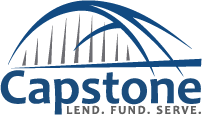The Profit-Killing Hidden Costs of a Fix & Flip
Flipping houses can be lucrative, but unexpected costs can quickly erode your profit margins. Many investors start with a clear renovation budget, only to face unanticipated expenses that eat into their returns. To fully understand how much it costs to flip a house, it’s crucial to account for the hidden costs that don't show up on listing prices or basic estimates.
Hidden Costs That Can Kill Your Profit Margin
Below are some of the most commonly overlooked or underestimated costs when flipping a house:
Permit Fees & City Inspections: Many municipalities require specific permits for plumbing, electrical, or structural work. These fees can range from a few hundred to several thousand dollars, depending on the scope.
Holding Costs: While your flip sits on the market—or during long renovations—you’re paying interest on loans, property taxes, utilities, and insurance. These holding costs can add up quickly.
Foundation and Structural Repairs: Issues like cracks, uneven flooring, or termite damage may not be visible during your initial walkthrough but can become major repair items.
HVAC, Electrical, and Plumbing Upgrades: Older homes may require full system replacements to meet code, which is far more expensive than minor repairs.
Waste Disposal and Dump Fees: Demo generates a surprising amount of debris. Budget for dumpsters, haul-away services, and any disposal regulations.
Staging and Marketing: Professional photography, home staging, and online advertising are essential for maximizing your sale price—but they’re also an upfront cost.
Price Reductions: If the property sits too long or comps change in your area, you may need to reduce your asking price to close the sale.
How Much Does It Cost to Flip a House?
How much it costs to flip a house varies significantly depending on location, property condition, and project scope. However, let’s break down some averages to help guide your expectations.
National Averages
Average cost to flip a house: Nationwide, expect total costs (purchase + rehab + holding + sale) to land between $60,000 and $100,000 for a typical single-family home.
How much does it cost to flip a 1,500 sq ft house?: For a moderately distressed home of this size, investors often spend between $45,000 to $70,000 in total renovation and associated project costs, excluding the purchase price.
Average cost per square foot to flip a house: Rehab costs alone typically range from $25 to $60 per sq ft, depending on quality of finishes and necessary repairs.
Typical Breakdown of Fix and Flip Repair Costs for a 1,500 sq ft House
Here’s a rough breakdown of fix and flip repair costs for a 1,500 sq ft house:
| Repair Category | Estimated Cost Range |
| Interior Renovation | $15,000-$30,000 |
| Roof & Exterior Repairs | $5,000-$15,000 |
| HVAC, Electrical, Plumbing | $10,000-$20,000 |
| Permits & Inspections | $1,000-$3,000 |
| Waste Disposal | $500-$1,500 |
| Staging & Marketing | $2,000-$5,000 |
Keep in mind: older homes or properties with structural issues can quickly exceed these ranges.
Flipping Costs in Texas: A Localized Look
Texas is a massive and diverse real estate market. Flipping in Austin versus Amarillo offers dramatically different cost and profit potential.
Most Expensive Places to Flip in Texas
Austin: High property prices and labor costs mean renovation budgets stretch further. Average flips here often exceed $100,000 in total costs due to market competitiveness and building codes.
Dallas-Fort Worth (DFW): Renovation costs are moderate, but competition among flippers drives up purchase prices.
Houston: Flood-prone areas require special inspections and sometimes costly foundation work.
Cheapest Places to Flip in Texas
El Paso: Low property acquisition costs make it easier to achieve ROI, though resale prices may also be lower.
Lubbock and Wichita Falls: These markets offer budget-friendly entry points, with the caveat of slower appreciation compared to urban hubs.
Regardless of city, always budget a contingency—typically 10–15% of the total renovation budget—for unexpected issues.
Secure Your Profits with the Right Lending Partner
Even if you plan carefully, surprises in a flip project are inevitable. The key is being financially prepared—not just for the visible costs, but the hidden ones too. Working with a trusted hard money lender ensures you have the capital and flexibility to handle whatever your project throws at you.
At Capstone Capital Partners, we understand the true costs behind every flip. Whether you're budgeting for fix and flip repair costs, or wondering how much it costs to flip a house in general, we’re here to help. Our Texas-based team offers competitive rates, fast closings, and experience-backed support tailored to your local market.
Ready to protect your profits and fund your next flip with confidence? Visit Capstone Capital Partners to get started.



